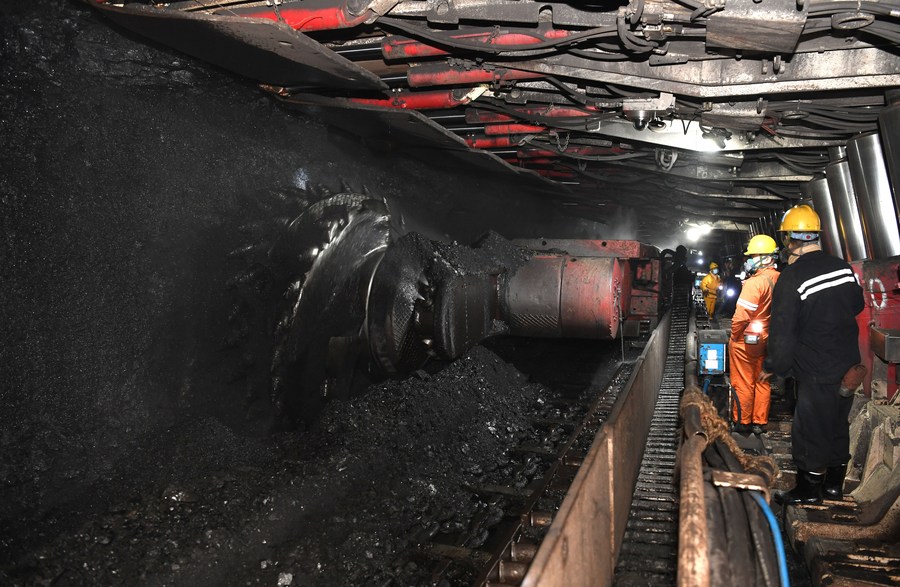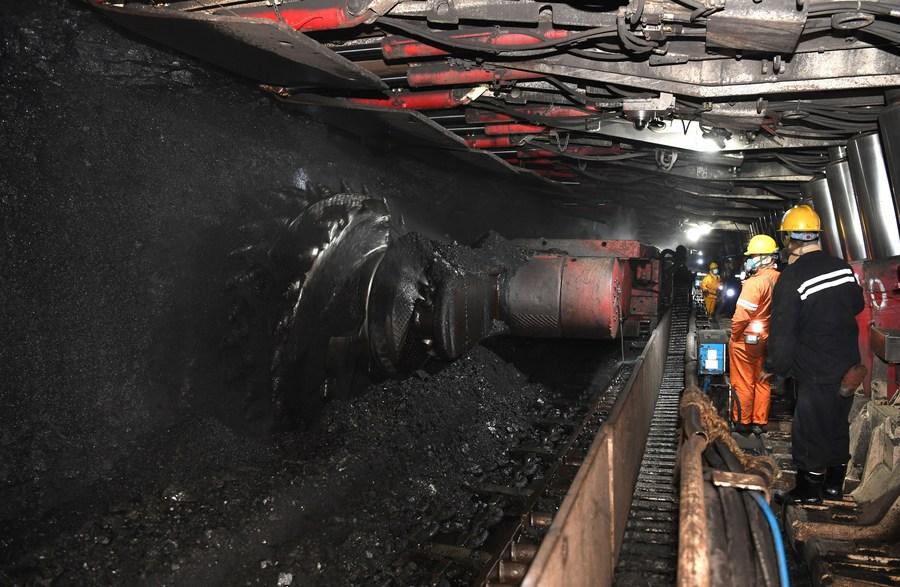
Miners work at Qianyingzi coal mine in Suzhou, east China's Anhui Province, Oct. 20, 2021. (Xinhua/Han Xu)
BEIJING, Nov. 16 (Xinhua) -- China has ramped up energy production and reined in prices to secure sufficient energy for factories and support the economy, assuaging concerns over stagflation.
Energy prices have surged globally since the start of this year amid a supply crunch. In China, energy strains caused power outages in September, hitting families in certain regions and forcing some factories to halt production.
"China has worked to boost coal production and bring coal prices back to a reasonable range," Meng Wei, spokesperson for the National Development and Reform Commission, told a regular press conference Tuesday.
HIGHER OUTPUT, LOWER PRICES
China's coal output grew 4 percent year on year to 360 million tonnes in October, and coal production is maintaining steady growth this month, showed data from the National Bureau of Statistics (NBS).
The coal stockpiles of the country's power producers rebounded, with power plants nationwide reporting a total of 129 million tonnes of coal in their inventories on Nov. 14, sufficient for 22 days of consumption. This is nine days more than the level at the end of September.
Increased coal output and inventories at power plants helped drive down the once-soaring coal prices, with coal futures on the Zhengzhou Commodity Exchange diving nearly 60 percent from their peak within a month.
Apart from coal, China also cranked up the production of natural gas to ensure adequate supplies. Since Nov. 7, China's daily supply of natural gas has reached more than 1 billion cubic meters, about 100 million cubic meters more than the same period last year.
"Gas companies must enhance production to increase domestic supplies," Meng said.
EASING STAGFLATION CONCERNS
A surge in commodity prices once raised concerns of stagflation in the world's second-biggest economy, an economic phenomenon in which prices rise yet business activity stagnates. Stagflation leads to high unemployment and reduced consumer spending power. The once-soaring energy prices increased production costs to companies and exacerbated stagflation concerns.
There seemed to be some signs of stagflation due to the pandemic, natural disasters, international commodity price hikes, and tightening supplies of raw materials. These were "caused by short-term factors, and the situation will be temporary," said NBS spokesperson Fu Linghui.
The country's economy has maintained sound recovery, according to NBS data on Monday, with retail sales and factory output beating expectations and the unemployment rate remaining low in October.
China's value-added industrial output increased 3.5 percent year on year in October, compared with 3.1 percent in September. Retail sales of consumer goods increased 4.9 percent year on year last month, 0.5 percentage points higher than a month earlier. The surveyed urban unemployment rate stood at 4.9 percent in October, 0.4 percentage points lower than in the same period last year.
UBS analyst Wang Tao echoed Fu's view, dismissing risks of stagflation, partly because the energy crunch has eased.
"We expect the producer price index to wane next year as energy shortages get addressed, and the whole year's consumer price index to hit 2 percent, so the country will be unlikely to go through stagflation," Wang noted. Enditem




 A single purchase
A single purchase









